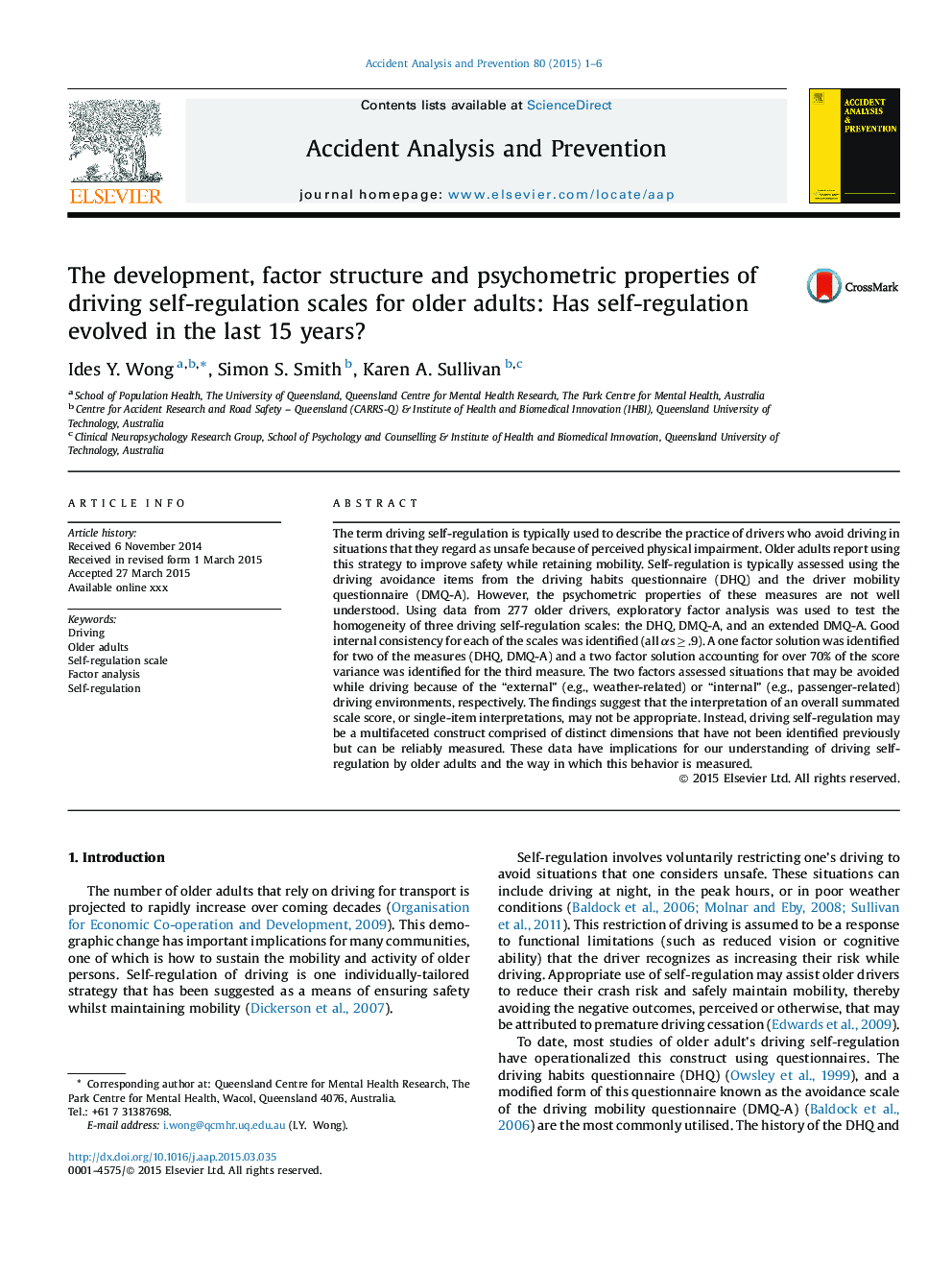| Article ID | Journal | Published Year | Pages | File Type |
|---|---|---|---|---|
| 6965617 | Accident Analysis & Prevention | 2015 | 6 Pages |
Abstract
The term driving self-regulation is typically used to describe the practice of drivers who avoid driving in situations that they regard as unsafe because of perceived physical impairment. Older adults report using this strategy to improve safety while retaining mobility. Self-regulation is typically assessed using the driving avoidance items from the driving habits questionnaire (DHQ) and the driver mobility questionnaire (DMQ-A). However, the psychometric properties of these measures are not well understood. Using data from 277 older drivers, exploratory factor analysis was used to test the homogeneity of three driving self-regulation scales: the DHQ, DMQ-A, and an extended DMQ-A. Good internal consistency for each of the scales was identified (all αs â¥Â .9). A one factor solution was identified for two of the measures (DHQ, DMQ-A) and a two factor solution accounting for over 70% of the score variance was identified for the third measure. The two factors assessed situations that may be avoided while driving because of the “external” (e.g., weather-related) or “internal” (e.g., passenger-related) driving environments, respectively. The findings suggest that the interpretation of an overall summated scale score, or single-item interpretations, may not be appropriate. Instead, driving self-regulation may be a multifaceted construct comprised of distinct dimensions that have not been identified previously but can be reliably measured. These data have implications for our understanding of driving self-regulation by older adults and the way in which this behavior is measured.
Related Topics
Physical Sciences and Engineering
Chemical Engineering
Chemical Health and Safety
Authors
Ides Y. Wong, Simon S. Smith, Karen A. Sullivan,
